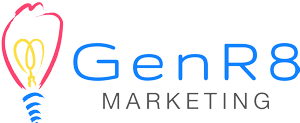In today’s digital age, email marketing remains one of the most effective ways to reach and engage your audience. However, sending out random emails isn’t enough. To truly maximize your email marketing efforts, you need to develop a well-structured email marketing funnel. This guide will walk you through the steps to create an email marketing funnel that drives results.

What is an Email Marketing Funnel?
An email marketing funnel is a strategic sequence of emails designed to guide potential customers through the various stages of the buying process. From awareness to consideration, and finally, to conversion, a well-crafted funnel can nurture leads and turn them into loyal customers.
The Stages of an Email Marketing Funnel
- Awareness
- Interest
- Consideration
- Conversion
- Loyalty
Step 1: Build Your Email List
Before you can start your email marketing funnel, you need a list of subscribers. Here are some strategies to grow your email list:
- Lead Magnets: Offer something valuable for free in exchange for an email address. This could be an eBook, a whitepaper, a checklist, or a discount code.
- Sign-Up Forms: Place sign-up forms on your website, blog, and social media pages. Make sure they’re easy to find and fill out.
- Content Upgrades: Offer additional content within your blog posts that readers can access by providing their email address.
Step 2: Segment Your Audience
Not all subscribers are the same. Segmenting your audience allows you to send more personalized and relevant emails. Common segmentation criteria include:
- Demographics: Age, gender, location, etc.
- Behavior: Previous purchases, website activity, email engagement.
- Interests: Specific products or services they have shown interest in.
Step 3: Craft Compelling Content for Each Stage
- Awareness Stage:
- Welcome Email: Introduce your brand and set expectations.
- Educational Content: Provide valuable information related to your industry or products.
- Interest Stage:
- Engaging Stories: Share customer success stories or case studies.
- Product Information: Highlight the benefits and features of your products or services.
- Consideration Stage:
- Product Comparisons: Help subscribers compare your offerings with competitors.
- Testimonials and Reviews: Showcase positive feedback from satisfied customers.
- Conversion Stage:
- Special Offers: Provide discounts, free trials, or limited-time offers to encourage purchase.
- Clear Call-to-Action (CTA): Make it easy for subscribers to take the next step.
- Loyalty Stage:
- Follow-Up Emails: Thank customers for their purchase and offer support.
- Exclusive Content: Provide access to exclusive deals, early product launches, or VIP programs.
Step 4: Automate Your Email Sequence
To ensure your emails are sent at the right time, use an email marketing platform to automate your email sequence. Set up triggers based on subscriber actions, such as signing up, opening an email, or clicking a link.
Step 5: Monitor and Optimize
Regularly review your email marketing metrics to see what’s working and what’s not. Key metrics to monitor include:
- Open Rates: The percentage of subscribers who open your emails.
- Click-Through Rates (CTR): The percentage of subscribers who click on links within your emails.
- Conversion Rates: The percentage of subscribers who complete the desired action (e.g., making a purchase).
Use A/B testing to experiment with different subject lines, content, and CTAs to see what resonates best with your audience.
Conclusion
An effective email marketing funnel can significantly boost your engagement and conversion rates. By understanding the stages of the funnel and crafting targeted content for each stage, you can guide your subscribers smoothly from awareness to loyalty. Start building your email marketing funnel today and watch your business grow!
If all this is too overwhelming for you, GenR8 Marketing can help get everything professionally set up for you. Reach out to us, and we’ll take care of the rest.
